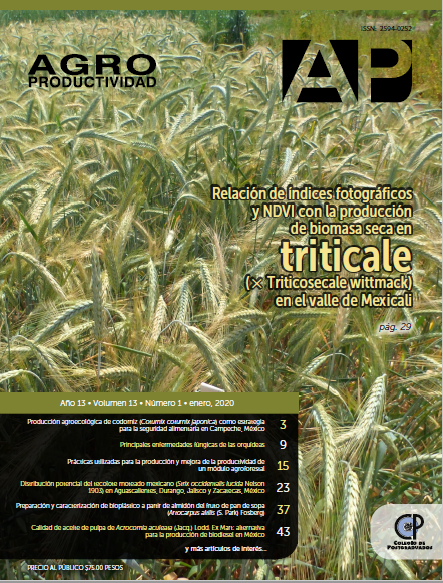The infective capacity of propagules of Arbuscular Mycorrhizal Fungi in sugarcane Cane mycorrhizal fungi
Main Article Content
Keywords
Biofertilizer, HMA, sugarcane, propagules
Abstract
Objective: The goal of the present research was to evaluate the infective propagules capacity of arbuscular mycorrhizal fungi (AMF) in sugarcane plantation at the Chontalpa, Tabasco region.
Design/methodology/approach: Rhizosphere samples were carried out on Cambisol Fluvico soils, belonging to the C-28 and Endogleyic Cambisol soils, belonging to the C-20 settlement, at a depth of 0 to 30 cm to evaluate percentage of root colonization, number of spores in 100 g of soil and for the taxonomic classification of HMA.
Results: The results of AM root colonization were 100% and the number of 2833 ± 2064 spores in the Fluvic cambisol soil and 2966 ± 873 spores in Endogleyic cambisol. Four morphospecies of mycorrhizal fungi belonging to four genera were found. The Endogleyic cambisol soil showed the highest number of morphospecies. The highest colonization was found at the 4?² dilution with 100% of root colonization and the lowest colonization at 46 dilutions with 93 % of root colonization.
Limitations on study/implications: For the period or stage evaluated it did not allow taxonomic classification, so the study should be done in more detail.
Findings/conclusions: However, result showed that there was not presence of AM spores in all dilutions used in this study. The taxonomic classification was not performed at this stage. The HMAs evaluated have a high potential for use in a biofertilizer production program.

